When an artist connects cerebrally and viscerally with experience and a place beyond the studio, there is a synergy that breaths a freshness into the work produced. There is a visible purity in this form of renewal. This observation can be applied to the oeuvre of Louise LeBourgeois. For over three decades LeBourgeois has been embedded in translating the water and sky of Lake Michigan. This week The COMP Magazine travelled up to Loyala Park for a conversation with LeBourgeois about how her youth created a platform for working as an artist, her connection to the body of water that defines the city of Chicago, the intersection of her studio practice and love of swimming, and her busy exhibition schedule for the remainder of 2023.
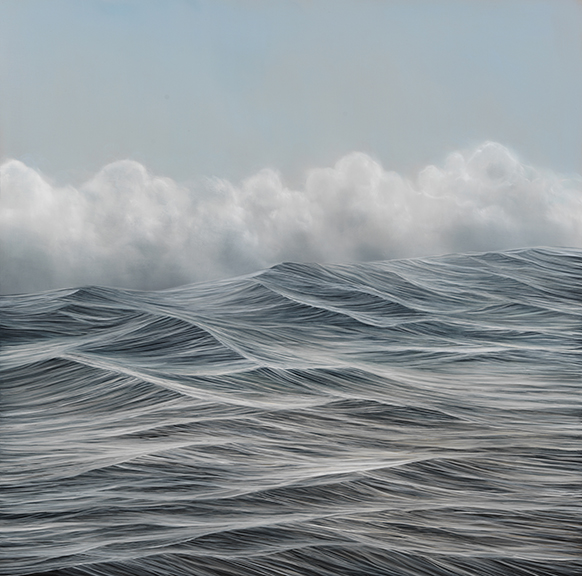
You have been making paintings for over 30 years. Can we jump back in time and discuss your early interests and how you ultimately devoted your life to painting? Were there any specific events or people you see having been pivotal in the making of this decision?
I had an unusual childhood in that my family lived in four very different places by the time I graduated from high school—three in the U.S. and one abroad. My immersion in four different places during my childhood taught me powerful lessons about how things appear to people who live in different places. Living in these places also counteracted, to some degree, the ways in which I also grew up in a bubble. I grew up monolingual, and most of my parents friends were white, middle to upper middle class, and in academia.
I was born in New Orleans, where both of my parents were raised. When I was a baby, all four of my grandparents and two of my great-grandparents lived nearby. We lived on a street surrounded by my mother’s family. My cousins were my first playmates. That was the world as I knew it. Even though my family moved away when I was five, I still think of New Orleans as my home.
When I was two, my father enrolled in graduate school in History at Tulane University. He wrote his Ph.D. dissertation on William Morris, the 19th century English designer, poet, and socialist. I have an early memory of sitting on the kitchen counter as my parents made dinner and discussed my father’s work. I don’t recall anything specific they said, but I remember their enthusiasm as they spoke. The world of ideas felt exhilarating.
My parents, my younger sister Anne, and I moved to Oxford, England in 1969 so my father could research his dissertation. I was surrounded by my parents’ conversations about William Morris, his ideas, his circle of friends, and the Pre-Raphaelite movement. Parents impart potent messages to their children. The message I absorbed was that a creative life surrounded by artists and thinkers was a life worth living.
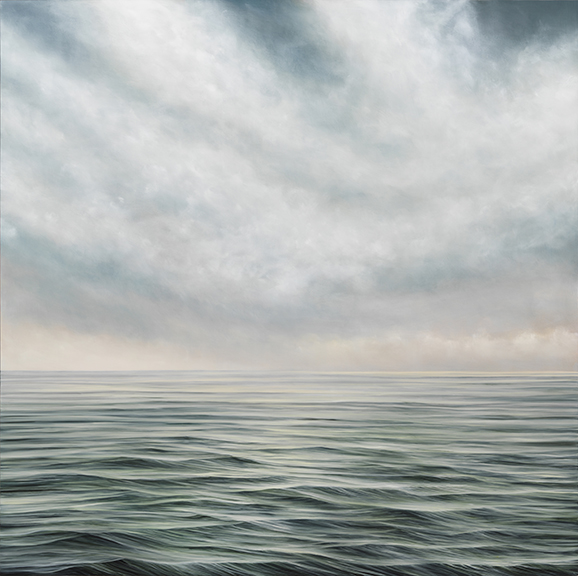
We lived in England for a year and a half. My father got a job teaching History at Clemson University in South Carolina, in the foothills of the Blue Ridge Mountains. We lived in Clemson from 1970 to 1978, from the time I was 6 until I was 14. I played in the woods surrounding our house. With my sister and other kids in the neighborhood, we built dams in the creek and small shelters with sticks and branches we found on the ground. We had hours of uninterrupted play time, free from adult supervision, testing our wits and physical strength in the landscape. I learned to trust my own thinking. I was an explorer, experimenter, and creator. The years I spent rambling in the woods nurtured my imagination and lay the foundation to my becoming an artist.
When I was 14 and entering 10th grade, my family moved to Chicago. My father got a fellowship to do research at the University of Chicago for one year. During that year, both my parents decided they wanted to stay in Chicago. My father quit his tenured job at Clemson, got an administrative job at the University of Chicago, and entered the MBA program.
In the end, the move to Chicago worked out well for me. But as a teenager, I was furious at my parents for not returning to Clemson. I agreed to move to Chicago for a year. I wanted to return to my friends and my beloved woods. In retrospect, my anger wasn’t about me being a cantankerous adolescent. Developmentally, I was the age at which relationships with my peers were fundamental to my evolving my sense of self. Staying in Chicago interrupted those friendships and ruptured in my connection with the lush, humid landscape of the southern Appalachian mountains I loved.
I still ache for that landscape. I will never stop missing it. In theory, I could move back, but decades have passed and I’ve spent almost my entire adult life Chicago. Moving would only introduce another layer of loss. I would miss Lake Michigan, my connection to which resonates with my connection to my South Carolina woods and creeks.
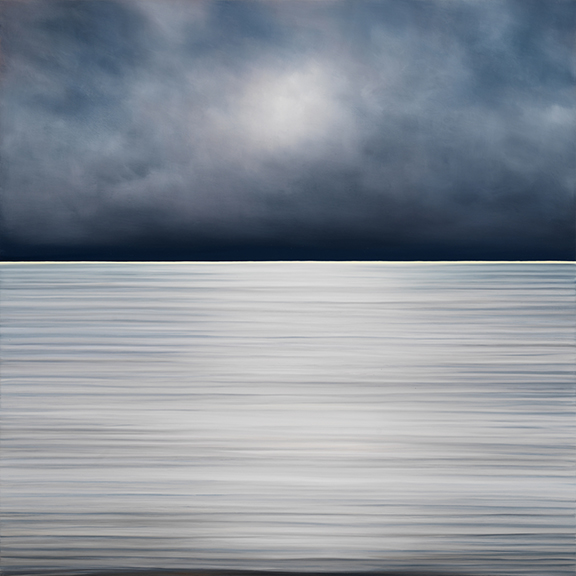
I graduated with an MFA in Painting at Northwestern in 1994, when I was 30. My time there was key to my making professional connections as an artist. I studied with Maria Tomasula, Philip Chen, Lorraine Peltz, Jim Valerio, Bill Conger, and Ed Paschke, and Jim Yood. It may sound insignificant, but I learned the importance of touch in creating a painting. A painter not only conjures an idea for an image, but brings the image to completion though their repeated touch of hand/brush on the painting’s surface. The way a painter touches a painting communicates just as much as the overt content of the painting does. This idea was new to me, and it became elemental to the way I approach my own work.
I met my husband Steve Carrelli when we were MFA students at Northwestern. Our partnership has provided both of us steadiness and inspiration in our artistic growth. I am incredibly fortunate to be a part of Chicago’s vibrant community of painters, artists, and thinkers. There are countless artists I’ve known through the years, some of them close friends, and some whose work I follow at a distance. Their commitment to their own vision constantly propels me to deepen my own artistic practice. I’ll name some of them here: Riva Lehrer, Tim Lowly, Elsa Muñoz, Eleanor Spiess-Ferris, Max King Cap, Raeleen Kao, Mary Porterfield, Nick Sistler, Amanda Williams, Karen Reimer, Jay Wolke, Anne Harris, Joanne Aono, Anna Kunz, Judy Natal, Ellen Holzblatt, Adam Fung, Ellie Wallace, Marc Filerman, Sheri Rush, Hillary Irene Johnson, Maggie Hubbard, Paola Cabal, Brian Ritchard, to name only a few.
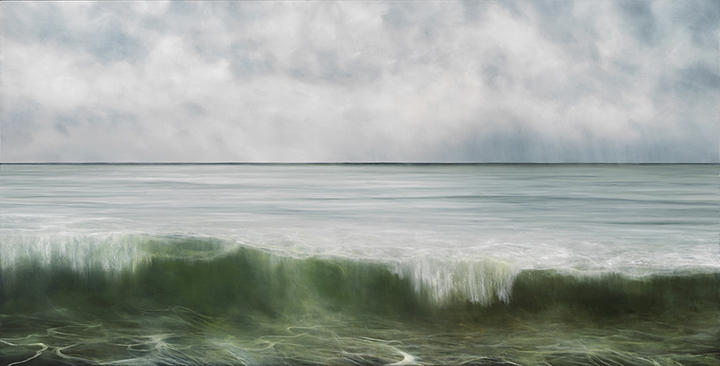
You have a deep affinity with lake Michigan (and our environment). Can you discuss the importance of this place to your studio practice?
I make paintings of water and sky, based on my relationship with Lake Michigan. My obsession with that simple composition, sky, horizon, and water, has many facets. I was a competitive swimmer throughout my teenage years, and in my late 30s I learned to become an open water swimmer. My swimming in the lake is an echo of my playing in the woods as a child, the desire for my body to be immersed in the landscape and engage with its elements. It’s a tactile, sensory, and kinesthetic need to experience where I exist on this planet. I feel most alive when I swim regularly in open water. I make my paintings, in part, as a response to that feeling.
Almost all of my paintings have a visible horizon line. If it’s not visible, it’s implied. The horizon holds the temptation of something unseen. I think it’s also a metaphor for the landscape I still miss.
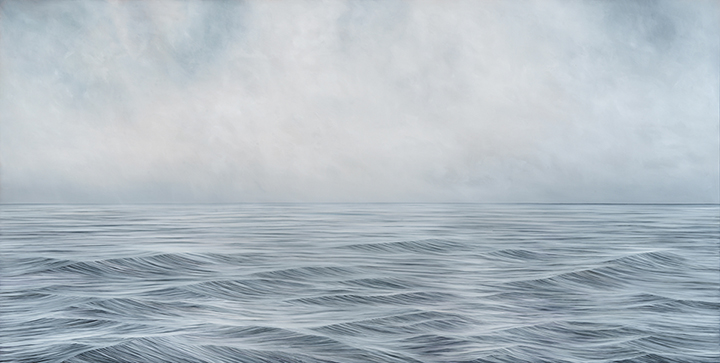
I wrote a long essay “Liquid Boundary” about how displaced I felt when we moved to Chicago, for multiple reasons, and how Lake Michigan and open water swimming allowed me to accept Chicago as my home. That essay was published in 2019 in the Chicago Quarterly Review. I was astonished and thrilled when it was named a Notable Essay in Best American Essays 2020.
You can order the issue of the Chicago Quarterly Review in which the essay appears.
Connection to place is an innate human need. Global capitalism has conditioned us to numb ourselves to our immediate environment. It has pulled our attention away from the terrain, weather, plants, and animals around us. It’s a profound emotional and spiritual loss for the human species, and this collective disassociation harms all life on Earth. The escalating climate crisis is a manifestation of this cumulative harm.
No one can claim that art alone can fix this. But a shift in human consciousness on a global scale can change our trajectory, and art is perhaps the most powerful way we can do that. My painting is one way I am able to practice altering my consciousness and to offer a visual expression that, I hope, offers encouragement for others to shift theirs.
Recently, I’ve been reading and listening to audiobooks by the Italian physicist Carlo Rovelli, who writes beautifully about physics for a lay audience. I don’t understand everything he writes, but I understand enough for it to have challenged my perception of the world.
In his book The Order of Time, Rovelli emphasizes that the universe consists not of things but of events. He writes, “Things” in themselves are only events that for a while are monotonous.” That is, in our human concept of time, we see only a miniscule sliver of the “event” of, say, a mountain or a monument, and this limited perception tricks us into believing in its solidity and permanence.
Rovelli writes in Reality Is Not What It Seems, “Boundless expanses of interstellar space ripple and sway like the surface of the sea.” For years, I’ve pondered the non-solidity of water and sky, and the nonexistence of the perfectly visible phenomenon of the horizon. When I read that sentence, I had a new thought. I realized that I have always aimed to use water/sky as a way to express an experience of consciousness immersed in a field of flux and flow.
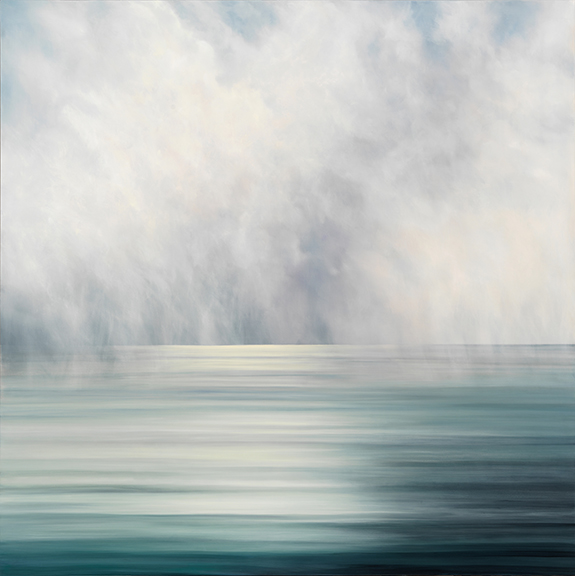
In addition to painting, you are an open water swimmer. There are direct connections with these two items. I see in each daunting challenges and a sense of fearlessness. Also, there are unknowns, even dangers. Can you share thoughts in response to this observation?
Your observation about fearlessness startled me. I don’t think of myself as fearless, but I can see how it might look that way to others. I often feel fear. I think it’s important to cultivate a relationship with fear so it doesn’t dictate your life. Fear contains good information if you have conversations with it.
I have been a committed open water swimmer for over two decades. It requires swimming skill, of course, but also a surrender to the conditions of the water. It requires knowing when to assert your strength and knowing when to relax into water’s movement. If you don’t know what you’re doing, it can kill you.
In 2019, I taught my first open water swimming safety workshop. In 2021, I started coaching triathletes in open water swimming. When I taught my first workshop, I needed to find the words to explain how a swimmer can determine how safe or dangerous it is to swim at any given time. I realized the formula is simple:
What resources do I have as a swimmer and what are the conditions of the water? Will the conditions of the water overwhelm my resources as a swimmer?
Answering those questions accurately, though, requires experience, both of your own swimming abilities and of the open water you want to swim in. There are several sub-questions to answer on the way to figuring out whether it’s safe to swim.
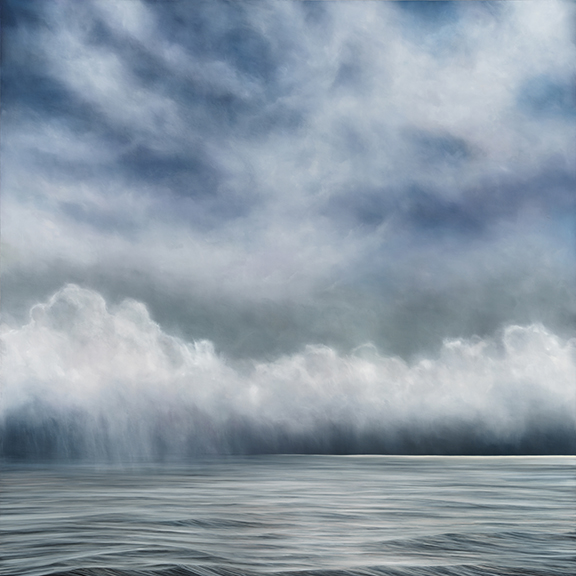
In retrospect, I realize that I applied that same thinking when I was in my 20s and embarking upon my path as an artist. What are my resources and what are the challenges I’ll face? There were unknowns, of course. Along with the positive messages about art I got as a child, I also absorbed the “starving artist” tropes we all know. I didn’t want to starve.
I wanted to become a professional working artist. Two things frightened me: failure and that I lacked sufficient courage to do it. I projected myself into the future. It turned out that the disappointment I imagined my future self to feel if I hadn’t put everything I had into making art frightened me more than failure did. I don’t remember exactly how I would’ve described “failure” in my 20s, but I do remember thinking that if I failed I would be able to pick myself up and do something else. That would always be an option, but turning back the clock at age 50, wishing I’d had more courage in my 20s, would not be an option.
That thought experiment showed me the path forward. I’m now 59. Looking back at myself as a 24 year old, I am immensely grateful that I was able to imagine myself in the future and use that as a guide.
I’ve summed all this up in a few words. It took more time, and was messier and more emotionally fraught than I’ve described. I remember countless times in my 20s and 30s, sitting quietly on my sofa, noticing fear rampaging through my body, sometimes shaking or crying, acknowledging how it felt physically and telling myself, “In this moment, I am safe. There is nothing bad happening right now.” I practiced it a lot, feeling the fear while acknowledging the reality of my safety in the moment, allowing myself to be aware of both existing at the same time.
I think that practice has helped me to discern real dangers from imagined dangers when I’m swimming in open water, and in life. At least it has so far.
Anyone who embarks on a path that both excites and frightens them toggles between their desire to walk that path and their fears holding them back. It’s valuable to pay attention to both. You need to untie the knots keeping you in place just as much as you need to invest in experiences that will propel you forward.
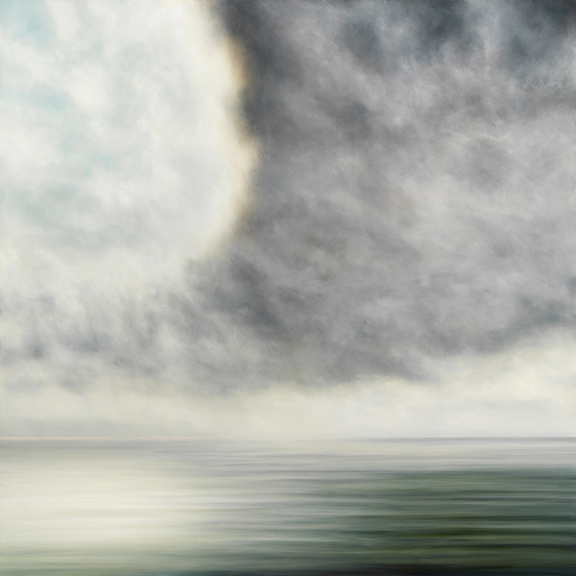
You have also been writing for over a decade, and since 2020 been working in performative/video practices. How do you see these activities intersecting with your traditional studio practice?
I have always loved to write. When I started to show my work regularly, I had to write artist’s statements, a process I found frustrating. I could explain many aspects of my work but I never felt I was getting at the heart of it. What was it, anyway? In 2003, I took a Creative Nonfiction class at Columbia College Chicago, where I taught in the Art and Art History Department.
The writing I did that semester revealed to me for the first time the continuing sense of loss I experienced when I moved to Chicago at 14. I kept taking writing and literature classes for several years. I decided I wanted an even deeper engagement, so I enrolled in Columbia College Chicago’s MFA program in Nonfiction Writing. I attended part-time, and it took me 5 years to complete. My 2016 MFA thesis consisted of 6 essays about my identity as a Southerner, racism and whiteness, and my family’s history in Louisiana as enslavers.
On the surface, it seems the subject matter of my essays is far removed from my paintings of Lake Michigan. But when you consider the horizon line as a key element in the work, as a metaphor of loss and yearning, and a metaphor for realms beyond our awareness that exist and attract us to them (what we tell ourselves about history, and events in the past that we’ll never have words for but that we carry in our bodies nonetheless), it’s clear they are connected. It’s also true that my writing and my painting stand as bodies of work independent of each other.
In 2020, I decided to create a video of as I worked on a large painting from start to finish. I had someone help me edit it and put it together. That was a lot of fun, and I plan to do more in the future.
In early 2023, Steve Donart and Robert Teverbaugh, who direct and produce storytelling performances with Tellin’ Tales Theatre, invited me to take part in one of their productions. The theme was mental health. The stories the group workshopped had to be true. I leapt at the opportunity. I wanted to talk about a recent situation that caused me tremendous anxiety. It involved both my swimming and my art.
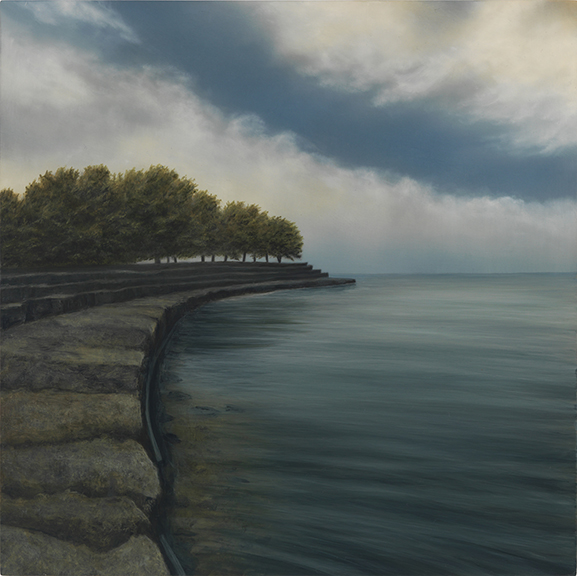
My story was entitled “Why I Quit Swimming at Promontory Point.” It was about the intrusive behavior of a male photographer who, in 2016, befriended the community of early morning swimmers I participated in for almost two decades. There’s a lot to this story, but what I most wanted to communicate was my increasing discomfort with the photographer, who is not an open water swimmer, posting his photos on Facebook and in local Chicago media with his own narration about what he perceived we were doing. He photographed men and women, but it was his portrayal and narration of women I found disturbing.
He portrayed our bodies through the lens of his own aesthetic, and wrote brief captions about us without comprehending the depth of knowledge and experience we all brought to our highly specialized and potentially dangerous sport. His images and words reduced our collective experience to expressions of his own visual pleasure.
The photographer and the swimmers never discussed consent. We never signed release forms. He had a pattern of posting on Facebook photos and videos of women who explicitly told him not to photograph them. He also got up close to photograph women swimmers as we were changing into our clothes, and did so repeatedly despite us telling him not to. He repeatedly violated boundaries of women who told him “no.”
In 2019, he took a video of me getting physically injured. I told him not to post it on Facebook. Four days later, he posted it on Facebook anyway.
When I asked to talk to him about my concerns, he told me he wasn’t interested in talking to me about it.
I fought hard internally to be able to continue swimming in the very place I write about in detail in my essay, “Liquid Boundary.” I spoke to other swimmers, and discovered that many of us had the same concerns, but did not feel safe enough to speak out. Some swimmers quit swimming at the Point because of him. With his camera, the photographer split a group of open water swimmers, dividing us into those who could tolerate his presence and those who could not.
On the day I told him he no longer had my permission to take photos of me, he retorted, “You’re childish!” and blocked me on Facebook.
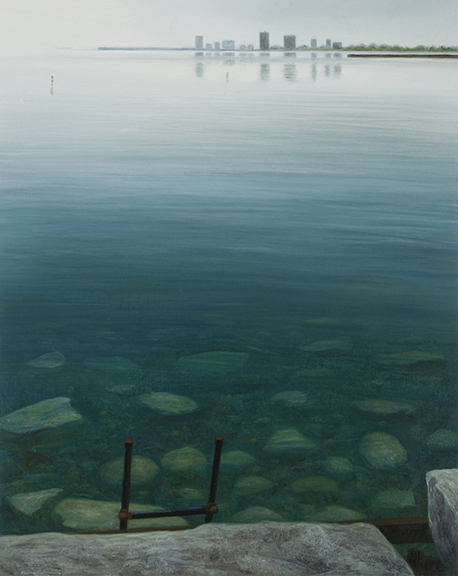
10” x 8”, 2010
I experienced all of this as psychological violence. I no longer felt physically safe in his presence, not because I thought he would physically touch me, but because I knew we women had no control over how he would portray us in public venues. The searing anxiety I felt around him (and still do when I imagine seeing him) was not, and is still not, compatible with me being safe in open water.
My performance of “Why I Quit Swimming at Promontory Point” allowed me a space to metabolize the elements of this situation and create art from it. It took a situation that caused me intense physical and emotional distress and gave me a way to move that story through and outside of my body and out into the world, where it belongs.
This story is both particular and universal. At core, it’s about the horror that all women, all over the world and throughout time, experience when we realize our “NO” has no impact on a man intent upon doing what he wants with our bodies.
Women need to tell these stories. All people who experience systemic oppression deserve the space to tell their stories. Systemic oppression thrives in silence. When we talk about how it affects our lives, we are better able to understand how it operates, we become more adept at interrupting it, and we change the world.
I am still writing about this experience. I also thoroughly enjoyed transforming my writing into live storytelling. I’d welcome opportunities to do it again.
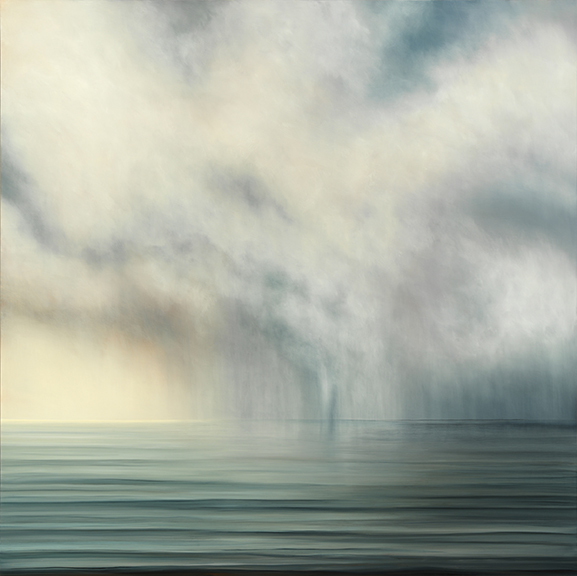
One item that piqued interest was your attention to process. You appear to work on a painting of an extended period. You take notes in when you worked upon the piece. Can you walk us through your conceptual and tactile process?
I work on a painting about 10-30 times, with the average being about 13-15 times. I know this because several years ago I began writing the date on the back of every painting each day I worked on it. I use it to anchor myself in time as I work.
I work on a painting several times whether the painting is small or large. Unless the painting is very large, I work on the entire surface each painting session. The depth I am able to convey in multiple layers of paint is more important to me than the composition I create horizontally and vertically. I want the quality of depth and atmosphere to become the overriding experience of encountering one of my paintings.
I sand my paintings in between each layer. I do this because it I feel compelled to create as smooth a surface as I possibly can. I don’t really know why. It’s something my body wants to do more than my mind can find words for. Again, it’s a tactile, sensory, and kinesthetic experience of engaging with paint, on my way to creating an image that resonates with a feeling of authenticity deep in my gut.
I think this is the fundamental difference between painting and writing. While painters can often talk or write at length about their work, one of the primary tasks of discovering who you are as a painter is learning, through trial and error, how your body wants to move as you work. I often feel disembodied when I write, especially if I’m digging deep and discovering new insights. As a writer, I crave the connection through words with ideas and realms far removed from my body. But I find it difficult to sit still long enough to get there. I am always firmly situated in my body when I paint. Even when I don’t feel like painting, I find pleasure in the motion of sanding my paintings and setting up my palette to work. That physical preparation is a valuable portal into the mental space of painting.
Along with the content of my painting being about Lake Michigan, swimming, the metaphor of the horizon, connection to place, and environment, it is also fundamentally about how one woman choses to live inside of her own body. I actually find that thought electrifying.
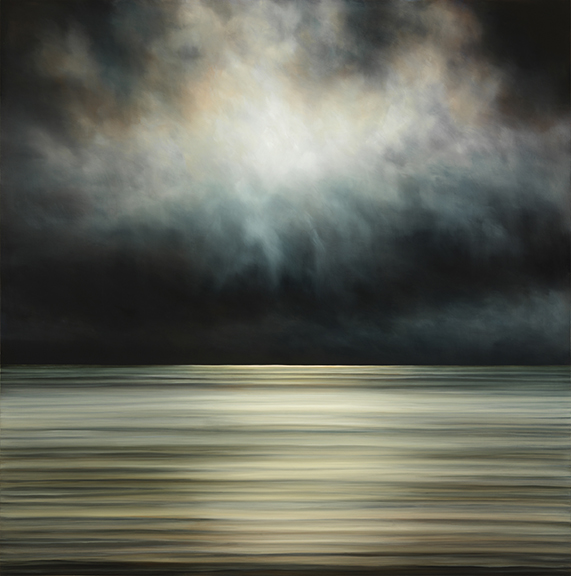
What do you value most in your aesthetic investigations/studio practice?
I value time and persistence, as measured in years and decades. I often don’t perceive much change in my work from year to year, but when I look back one or two decades, I see a lot of growth.
Day to day, I also value the time I have to paint, as well as the time to not paint, as I sit and look, or sit and daydream, or lie down and close my eyes. Some days, I have only a couple of hours to paint, and I make the most of it. I set an achievable goal and get it done. But on days I have the entire day in my studio, those moments of pause are just as important as moments of active painting. I value having enough time to pause and breathe.
A lot of creativity happens in those pauses.
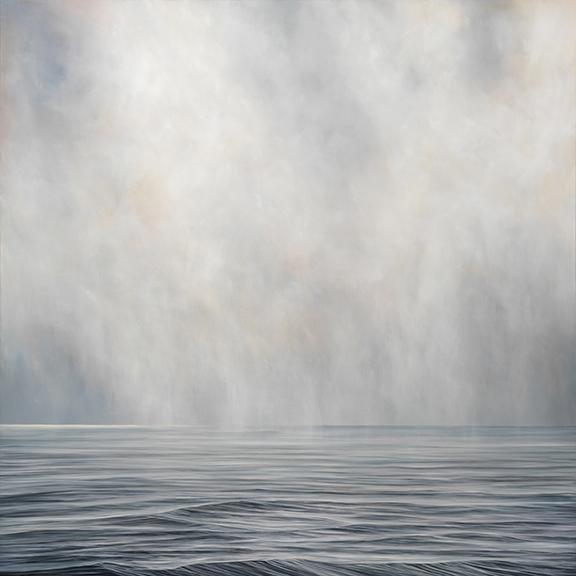
What are you currently working upon? Do you have any upcoming exhibitions, commissions, or projects? What’s your plan for the remainder of 2023?
In addition to my storytelling performance with Tellin’ Tales Theater in March 2023, I’ve worked on three commissions, with another commission in the works.
This fall, I’ll have two shows, a one person show opening in September, and a two person show opening in November.
The one person show will be at the Corvus Gallery at the University of Chicago Laboratory Schools, from September 18 until November 17, 2023. The opening reception will be Friday, September 22.
Corvus Gallery
University of Chicago Laboratory Schools
5840 S. Kenwood Avenue, Chicago, IL 60637
I will have a two person show with Karen Reimer at the Epiphany Center for the Arts from November 17, 2023 until January 13, 2024. The opening reception will be Friday, November 17.
Epiphany Center for the Arts
201 S. Ashland Avenue, Chicago, IL 60607
Also! It’s my third summer in a row of coaching open water swimming with Chicago Tri-Masters. I absolutely love teaching people to swim safely in Lake Michigan. I also learn a ton about coaching from Bernard Lyles, the head coach, and the other coaches.
My art and my swimming are inextricably linked, and I’m excited to see how my new role as an open water swim coach will influence my painting.
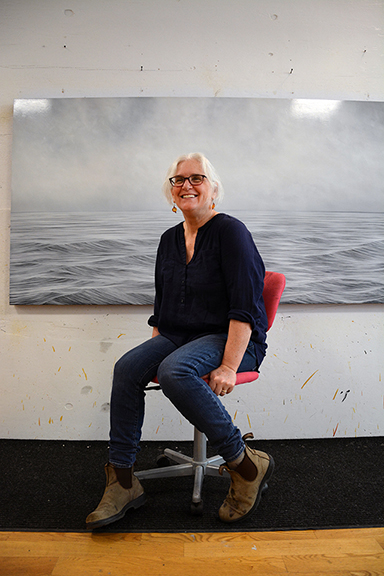
For additional information on the studio practice of Louise LeBourgeois, please visit:
Louise LeBourgeois – https://www.louiselebourgeois.com/
Dolby Chadwick Gallery – https://dolbychadwickgallery.com/artist/louise-lebourgeois
Louise LeBourgeois on Instagram – https://www.instagram.com/louiselebourgeois/?hl=en
Artadia – https://artadia.org/artist/louise-lebourgeois/
Claire Carino Contemporary – https://www.clairecarino.com/louise-lebourgeois
Klein Artist Works – https://kleinartistworks.com/videos/lebourgeois-louise/
Sixty Inches From Center – https://sixtyinchesfromcenter.org/louise-lebourgeois-life-on-the-great-lake/
Artist Interview and Portrait by Chester Alamo-Costello


